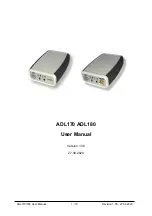
Rev. 0608
11
User information
stocking
Improper temperature and lighting will cause serious
product loss. Discoloration, dehydration and spoilage
can be controlled with proper use of the equipment and
handling of product. Product temperature should always
be maintained at a constant and proper temperature.
This means that from the time the product is received,
through storage, preparation and display, the temperature
of the product must be controlled to maximize life of the
product. Hussmann cases were not designed to “heat up”
or “cool down” product-but rather to maintain an item’s
proper temperature for maximum shelf life. To achieve the
protection required always:
1. Minimize processing time to avoid damaging
temperature rise to the product. Product should be
at proper temperature.
. Keep the air in and around the case area free
of foreign gasses and fumes or food will rapidly
deteriorate.
3. Maintain the display merchandisers temperature
controls as outlined in the refrigerator section of this
manual.
4. Do not place any product into these refrigerators
until all controls have been adjusted and they
are operating at the proper temperature. Allow
merchandiser to operate a minimum of 6 hours
before stocking with any product.
5. The load limit is to the top of the inside Plexiglass
product stop or 6" above the deck pan.
air
discharge and return air flue must be
unobstructed at all times to provide proper
refrigeration.
6. Keep the service doors closed (when applicable).
Refrigeration performance will be seriously affected
if left open for a prolonged period of time.
7. Avoid the use of supplemental flood or spot lighting.
Display light intensity has been designed for
maximum visibility and product life at the factory.
The use of higher output fluorescent lamps (H.O.
and V.H.O.), will shorten the shelf life of the product.
Case Cleaning
Long life and satisfactory performance of any equipment
are dependent upon the care given to it. To insure long
life, proper sanitation and minimum maintenance costs,
the refrigerator should be thoroughly cleaned frequently.
The discoloration which causes deli items to lose their eye
appeal and drastically shorten their shelf life is caused by
bacteria which will thrive in a deli department.
nOTe: soap and hot water are not enough to kill this bacteria. a
sanitizing solution must be included with each cleaning
process to eliminate this bacteria.
sHUT OFF Fans dURinG CleaninG PROCess!
They (it) can be unplugged within the case, or shut off case
at the source.
A. Scrub all surfaces thoroughly with any domestic
soap, detergent, or even ammonia based cleaners.
B. Rinse with hot water, but do not flood.
C. Dirt and residue may accumulate in the space between
the back interior wall, bottom and the evaporator coil.
This should be cleaned out using a low pressure water
hose and a bottle brush to loosen up and flush the
debris under the coil into the drain through. ** see the
CLEANING PRECAUTIONS below.
D. Apply the sanitizing solution according to the
manufacturers directions.
E. Rinse thoroughly.
F. Dry completely before resuming operation.
Cleaning mirrors
Only use a soft cloth and water for cleaning any mirrored
components. Be sure to rinse and/or dry completely.
CLEANING PRECAUTIONS
When cleaning:
• Do not use high pressure water hoses
• Do not introduce water faster than waste outlet can drain
• NEVER ON A SELF CONTAINED UNIT WITH AN EVAPORATOR FAN
• NEVER USE A CLEANING OR SANITIZING SOLUTION THAT HAS AN OIL
BASE (these will dissolve the butyl sealants) or an AMMONIA BASE
(this will corrode the copper componets of the case)
TO PRESERVE THE ATTRACTIVE FINISH:
• DO USE WATER AND A MILD DETERGENT FOR THE EXTERIOR ONLY
• DO NOT USE ABRASIVES OR STEEL WOOL SCOURING PADS
(these will mar the finish)
never use hot water on cold glass surfaces! it may
shatter and cause serious injury!
Allow glass surfaces
to warm first.
Plexiglass and acrylic Care
Improper cleaning not only accelerates the cleaning cycle
but also degrades the quality of this surface. Normal daily
buffing motions can generated static cling attracting dust
to the surface. Incorrect cleaning agents or cleaning cloths
can cause micro scratching of the surface, causing the
plastic to haze over time.
Cleaning
Clean with plenty of nonabrasive soap or detergent and
luke warm water, using the bare hand to feel and dislodge
any caked- on dirt. A soft grit free cloth, sponge or chamois
may be used, but only as a means of carrying the water to
the plastic. Dry with clean damp chamois or clean soft cloth
such as cotton flannel. Hard, rough cloths or paper towels
will scratch the acrylic and should not be used.
























